Silent Hill: Downpour has to be my most anticipated horror game this generation. The series’ previous outing on HD consoles didn’t fare too well. Silent Hill: Homecoming was an underwhelming experience marred by design flaws and a lack of understanding for the series’ lore. Silent Hill: Downpour looks to remedy the gaping hole in the hearts of Silent Hill fans by providing an engrossing experience.
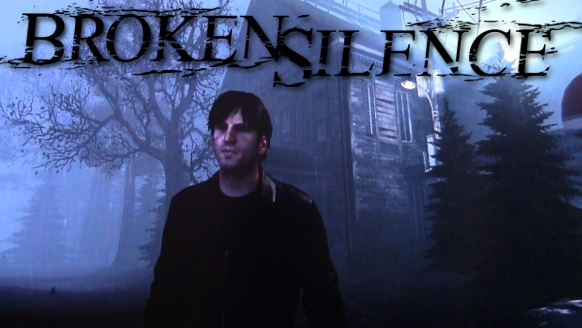
Developed by Vatra in The Czech Republic, Silent Hill: Downpour follows Murphy Pendleton. Murphy is a convict that finds himself in the grasp of the powers that be in Silent Hill after a prison transfer goes terribly wrong. The mystery behind Murphy’s imprisonment remains hidden until the game releases later this year. Silent Hill Historical Society owner / Silent Hill Experienced co-host, Whitney, and myself were invited over to Konami to finally try out the game. The team arranged for us an exclusive demonstration of Downpour.
Our demo started immediately after the bus crash. Upon first glance, I noticed that the lighting in Downpour was striking. The forest area that the demo begins in is very pleasing to the eye. Sun light that has been muted by fog passes through trees and their leaves with a nice effect. The ground textures have been noticeably improved from the bad batch of screenshots we saw a few months ago. Producers Tomm Hulett and Devin Shatsky explained that this demo was a much newer build than what has been seen in the past. Instead of taking a more linear approach in our playthrough, we consciously made an effort to examine as much as we could in the environment.
We made our way to the diner on the outskirts of Silent Hill. This section has been previewed before, but not to this detail. We made a note to touch everything, including both toilets! This being my first hands-on experience with the game, my opinion had changed on one of the aspects that I had once hoped would be altered. Objects in the environments of Downpour shimmer to help the player realize that they can be used. I had originally disliked this feature due to worries of immersion being broken, but after playing the demo, and I can confidently say that I appreciated the feature greatly.
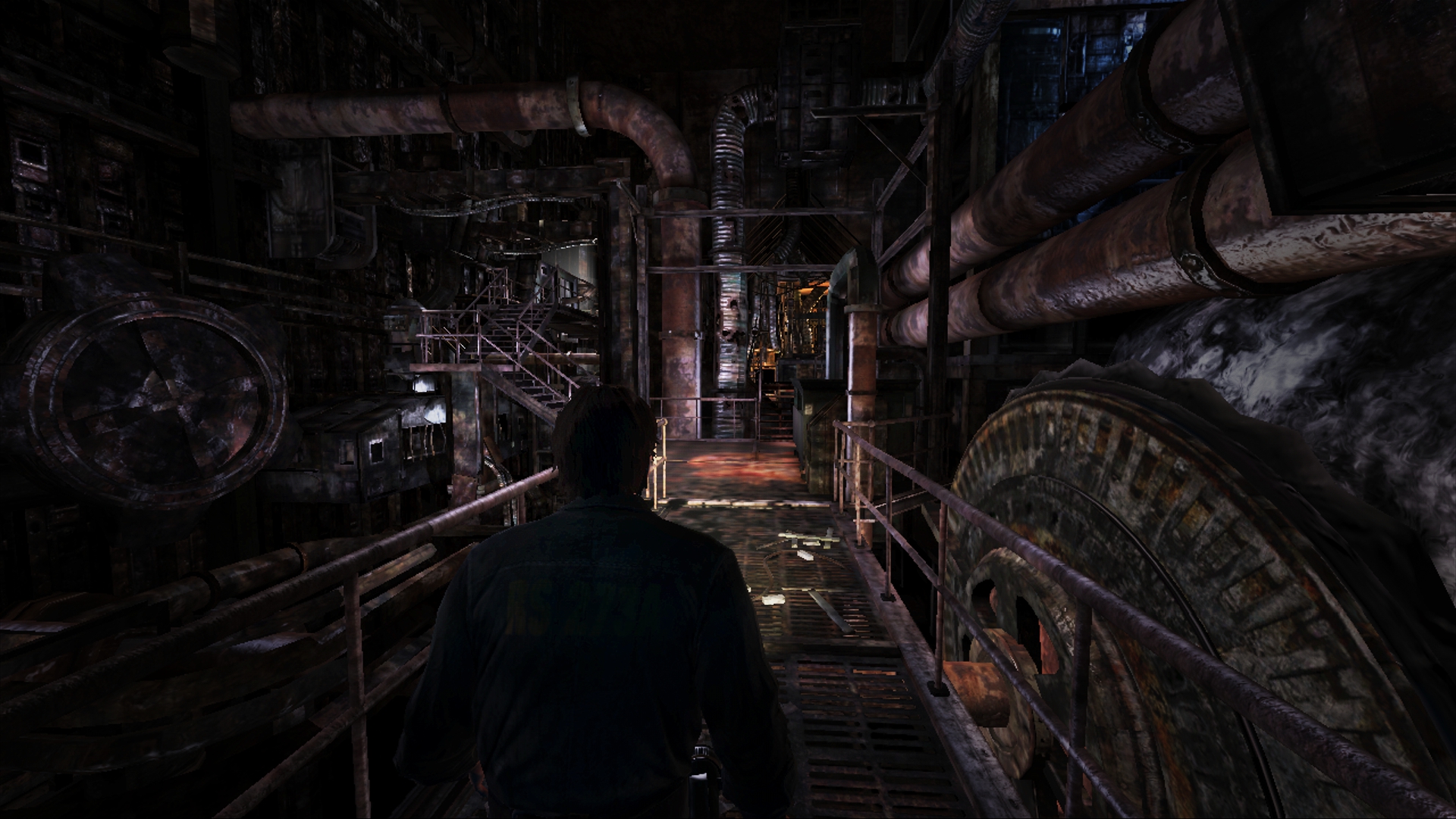
In our playthrough, we were set at a decent level of brightness. Many rooms were draped in darkness. The only source of light being Murphy’s flashlight. Missing an object could be quite common without the shimmering effect: it assists in way that surprisingly did not come off as annoying or distracting. I found myself carefully looking around a room for useable object. Button prompts –now an optional setting—also helped get me into the groove of the game.
Optional tasks can be done to further flesh out the current environment. This can either mean finding some coins to turn on jukebox with songs from the past games, or an entirely new side-quest. I found myself confused later in the demo when I had acquired a main storyline key, and a sidequest key. A distinct marker that differentiates them—besides reading Murphy’s journal–would be quite useful. Talking with Tomm, I had suggested a font color change for objects in the inventory that are not part of the main story. Due to being worried about time, I did not read Murphy’s journal as much as I would have if I was sitting down with the game alone. So, perhaps this is a fault on my part. More time, and more objects in the inventory will show if this will effect others when the game releases.
We made our way into the diner’s kitchen fully aware of what will happen next. Someone had left the gas on in, and it was up to Murphy to turn it off. Doing this triggered the game’s first Otherworld transition. It was a little fast, and not as subtle as in past games, but it was a sight that got my adrenaline pumping. It was more in vein with the feel or break away transition started by the Silent Hill film. Whether all transitions will move at such a speed or fashion is unbeknownst to me. Hearing the room distort and crumble away was exciting.
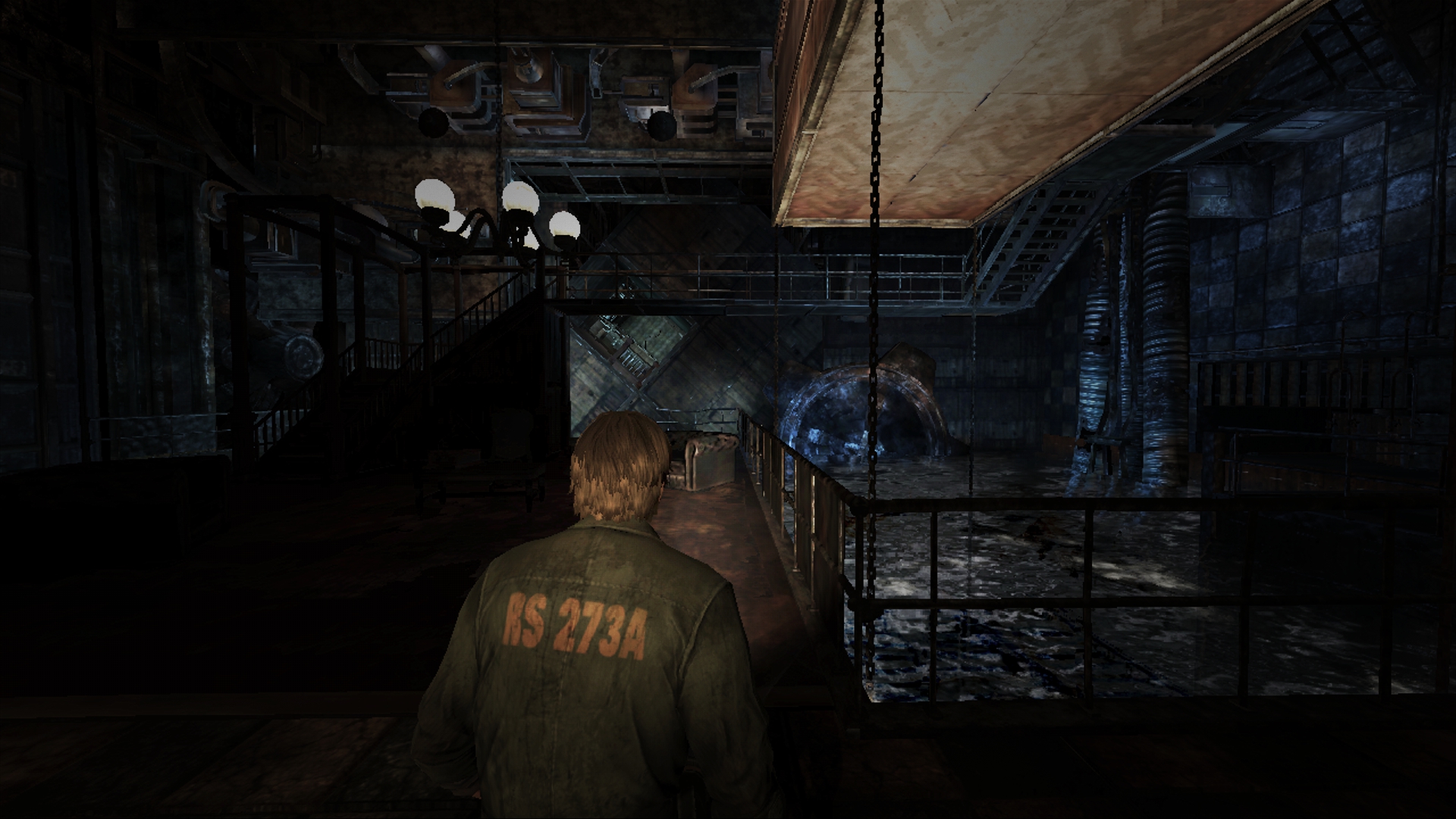
After preventing the room from flooding, we made our way past a hallway into a room that could not possibly reside within the small diner. There we met one of the game’s first enemies: The Void. This bright light that acts like a black hole will chase Murphy relentlessly. The first hallway that we ran into continued to stretch and keep Murphy in the same position. Mind game type levels should be expected in the full game. After the hallway loop ends, Murphy is faced with running as fast as he can from The Void. Something new in the build that we were playing, was inclusion of caged creatures in the hallways. In past demos, the boxes that Murphy would drop behind him in an effort to slow The Void were just boxes. They were changed into creepy cages containing poor tortured soul. Murphy is sacrificing others for his own well being.
Unfortunately, we ran into a bug that prevented Murphy’s flashlight from showing during the chase scene. I died a few times due to the bug, but rest assured that it won’t be an annoyance in the full game. One thing that we noticed during the chase scene, was that the pathways that could be taken changed randomly. We found this out the hard way when we once again attempted to flee from The Void, but was greeted to a closed door rather than an open one. Tomm Hulett could only laugh at our expense. It seems that pathways or solutions to a problem will change often; there goes knowing what’s around the corner during a second playthrough.
Running from the void was pretty interesting. What I especially liked was the effect put on Murphy when close to it. Acting like a black whole, effects around The Void appear to pull things in. Running from it and looking over your shoulder shows Murphy’s face being distorted; The Void is trying to suck him in. When running just a few feet next to The Void, Murphy starts to have red burns across his body. The Void is disintegrating Murphy in real time. Add on top of that a slow motion effect when passing through the strongest concentration of light, and you have an intense near-death scene.
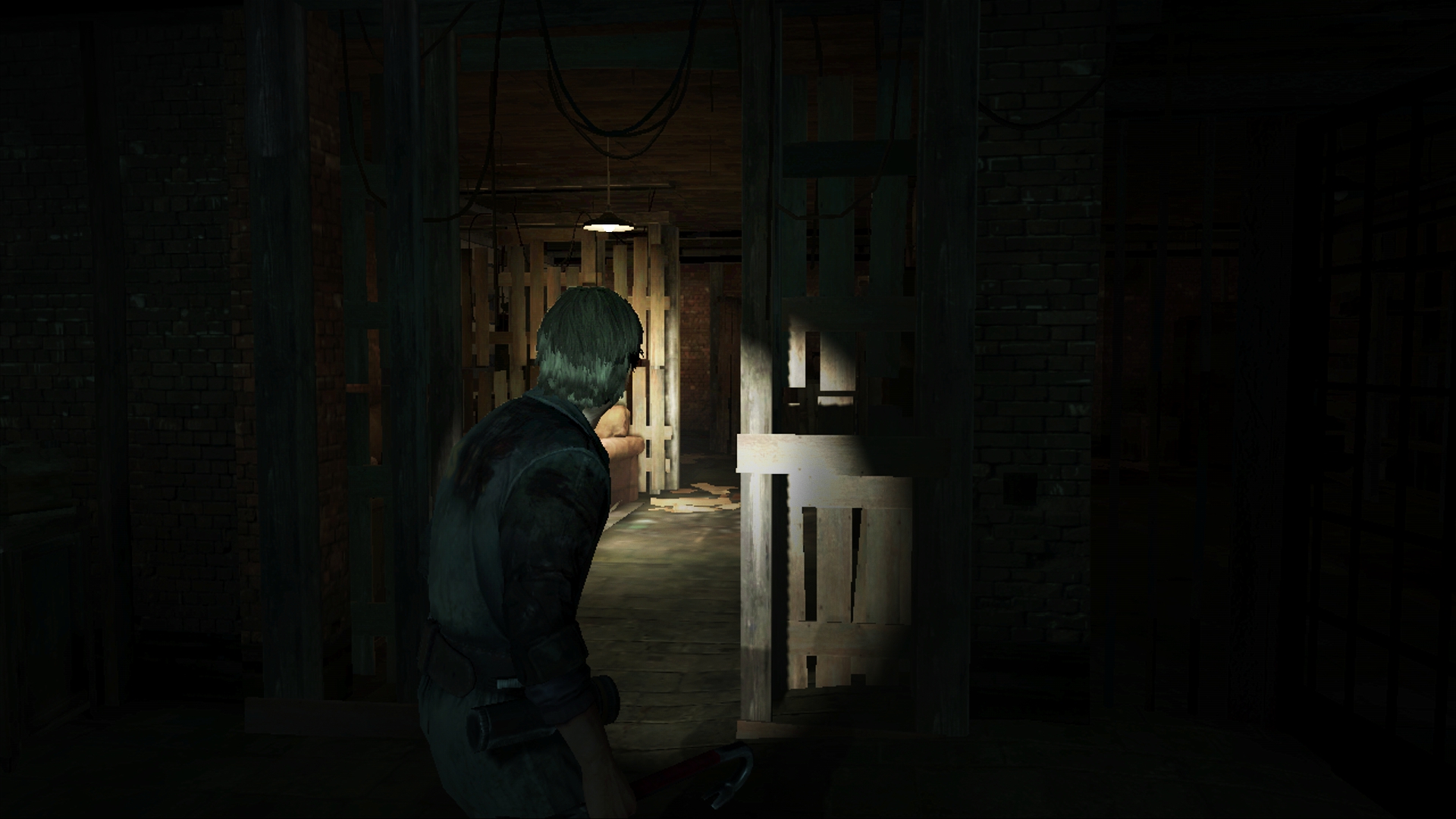
After escaping from the presence of The Void, we ended up in a descending hall that acted like a slide. In past demos, the slide portion was much shorter, but we got a look at an extended version. Murphy can be controlled so he can avoid walls or objects while in descent. At the bottom of this slide was one the game’s first environmental puzzles. This room was being shown for the very first time. We had a look around, and then was treated to the song Born Free. The old tune played through a record player that had no purpose to be in a place such as this. But this is Silent Hill after all; a perverted sense of feng shui is a series staple. The song made this area very unsettling. Born Free might be what many convicts listened to on the radio. The song became popular in 1966. It’s hard to ignore that many objects and furniture in Downpour have a distinct retro look. It’s almost as if the town’s theme is being influenced by the 60’s or earlier. The story significance of this is something I am wondering about.
The laws of gravity did not apply to our first new area. The layout has stairs, ramps and other details in the wrong orientation. The goal was to turn the room in parts so that Murphy could continue forward. The task wasn’t necessarily difficult, but we were playing on Normal difficulty for both combat and puzzles–we get to the combat soon. Tomm made it clear that puzzles will be more complex on harder difficulties. For demo purposes—and to not look like fools—we opted for Normal mode.
The rotating room was an interesting sight. Grime, rust, and water covered the area. After getting into the puzzle a bit, we noticed that water flowed and pooled on the ceiling of some rooms. The water effects seem to be fairly decent. Murphy himself can be affected by water, and noticeably becomes drenched from head to toe.
Once we left the rotating room, we were face to face with The Void again. While I’m not hoping for The Void to make an appearance every other level, having moments that break up the rhythm with a chase scene could work well for this game.
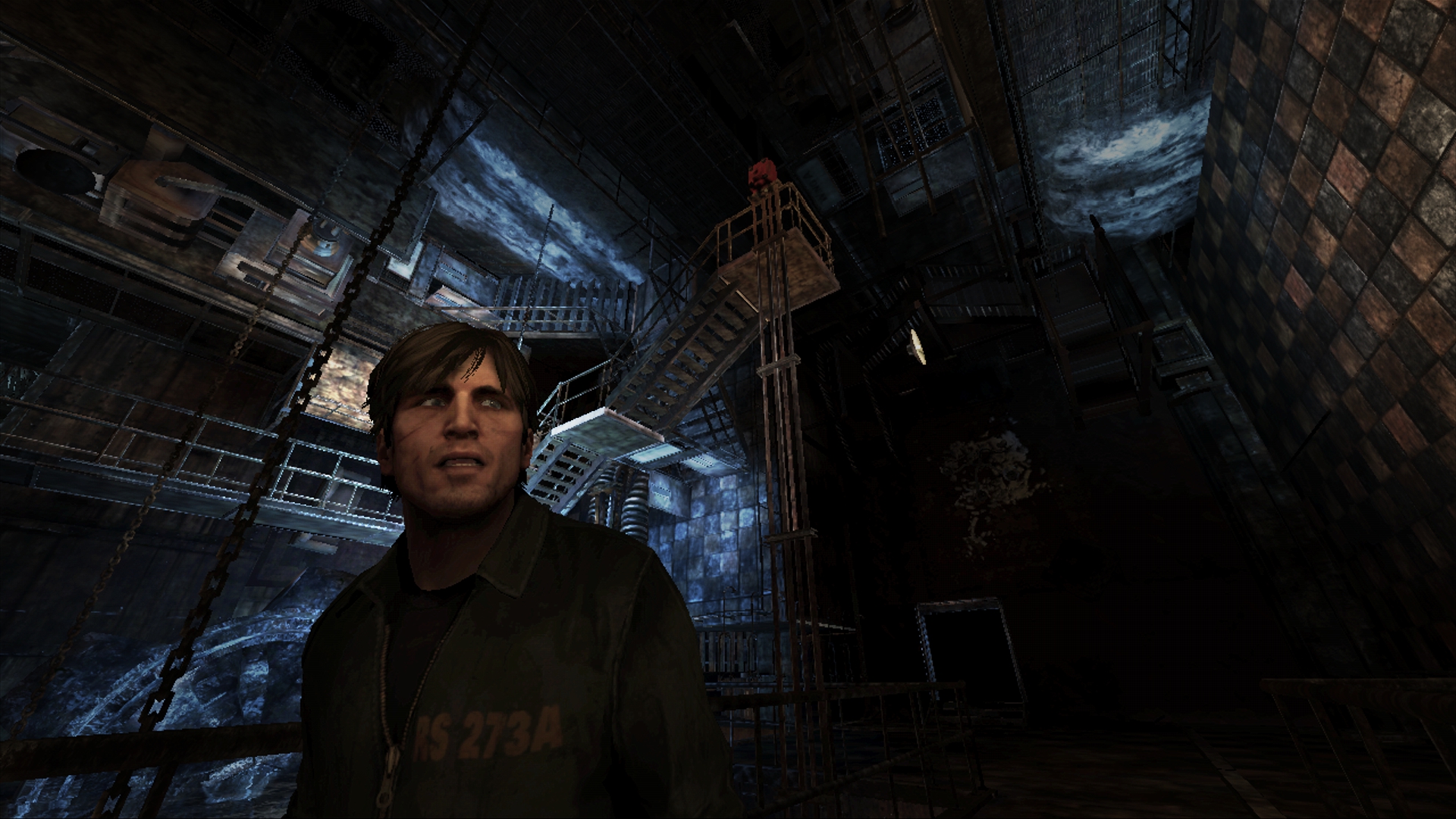
The layout of the map is meant to disorient poor Murphy. After leaving The Diner and going into the Otherworld, Murphy somehow ends up back in the kitchen. Impossible architecture or layouts is something I find personally very interesting. Stanley Kubrick did things like this in The Shinning—whether many people noticed or not–and it’s a fun thing to analyze after watching. Murphy traveled extremely deep underground in the Otherworld. An endless staircase prevented us from going any further. Only when we ran back down the stairs did we end up in The Diner. Little things like this stick with me; Downpour’s inclusion of such ideas was something I had personally hoped for.
Exploring the basement of the abandoned home leads to the game’s first creature fight. After interrupting a beating in progress, Murphy gets his fellow inmate killed. They weren’t exactly buddies, but Murphy is still visible shocked. What appeared to be a woman in distress turned out to be a Screamer. This is when I finally got my hands on the combat controls after fearing them for all this time. I heard some bad things about combat, but I left pleasantly surprised.
The Screamer was extremely brutal. Her attacks came fast and strong. While I familiarized myself with the combat, I got my ass handed to me a few times. The combat certainly has a learning curve: learning the patters and rhythm of a fight seems to be needed here. Murphy can block, and time his quick or heavy attacks accordingly. It wasn’t until I fought a Screamer outside that I had gained enough understanding to fight a little better. Holding the attack button brings about a heavy attack like in the old games. Tapping it sends a quick but weaker attack at your opponent. Holding Y or Triangle will have Murphy block.
The “anything as a weapon” weapon system causes these fights to be very frantic. I slightly worry that players will get stuck in a situation that running won’t be enough when no decent weapons are around, but I’ll have to play more with different types of weapons to judge that fully. Running through a few rooms certainly gave a few precious moments to search for a new weapon, but my worries weren’t exactly proven, I’m just thinking ahead. The Screamer’s flurry of attacks also sent me up against a wall or corner of a room. In some instances, the camera did not make this any better. I could not clearly see where Murphy was, or the angry Screamer; hopefully that will be something looked into.
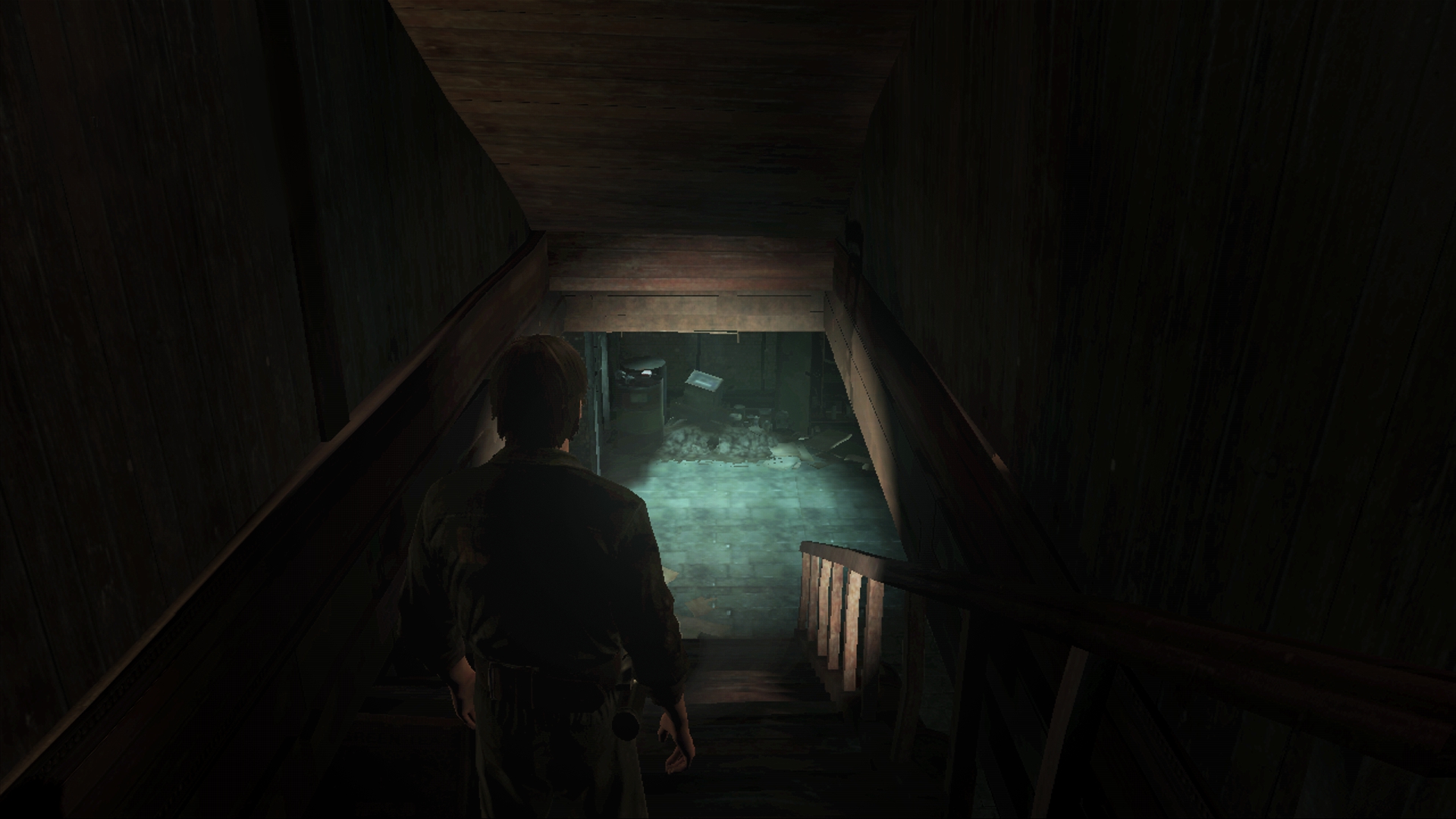
The crowbar was my favorite weapon in our playthrough. For obvious reasons, it was useful. Smacking a Screamer across the face, and finally ending her life is a satisfying experience. The combat was not frustrating, but it was demanding. Like I mentioned earlier, there will be some skill needed to master the combat rhythm. This was something I also liked about Homecoming, but in that game, the pattern or rhythm didn’t really matter. The knife was the best weapon for everything.
Holding the left trigger locks onto the nearest enemy. From here, Murphy can make sure to not let the agile Screamer flank him. The lock-on was very much needed, as she was very fast. Perhaps I’m nitpicking, but the small reticule that shows that a lock on is being done is not needed. In a small way, it distracts from the HUD free visuals. The forced camera focus should be enough for everyone.
My hopes with Downpour, is that players will eventually need to memorize a distinct combat style for each type of standard enemy. That would bring the series up in quality in terms of the combat, but still have it remain distinctly survival horror, while heavily suggesting that you should call it quits and run away while you’re still alive. Right now, I can say, that the combat feels good. I can imagine myself in fear of attack because of my current weapon being sub-par, or my health being low. The survival aspect is most definitely present.
This aged structure that we were now in was a little confusing. Sadly there is no dedicated map button. Opening up the Journal allows for multiple pages to be flipped, the map being near the end. While I do enjoy seeing Murphy’s thoughts in his journal, I think there were a few things that could be tweaked with the system. When zooming in on documents or notes found in the game, the zoom is a little too close. Having to pan over the text is needed.
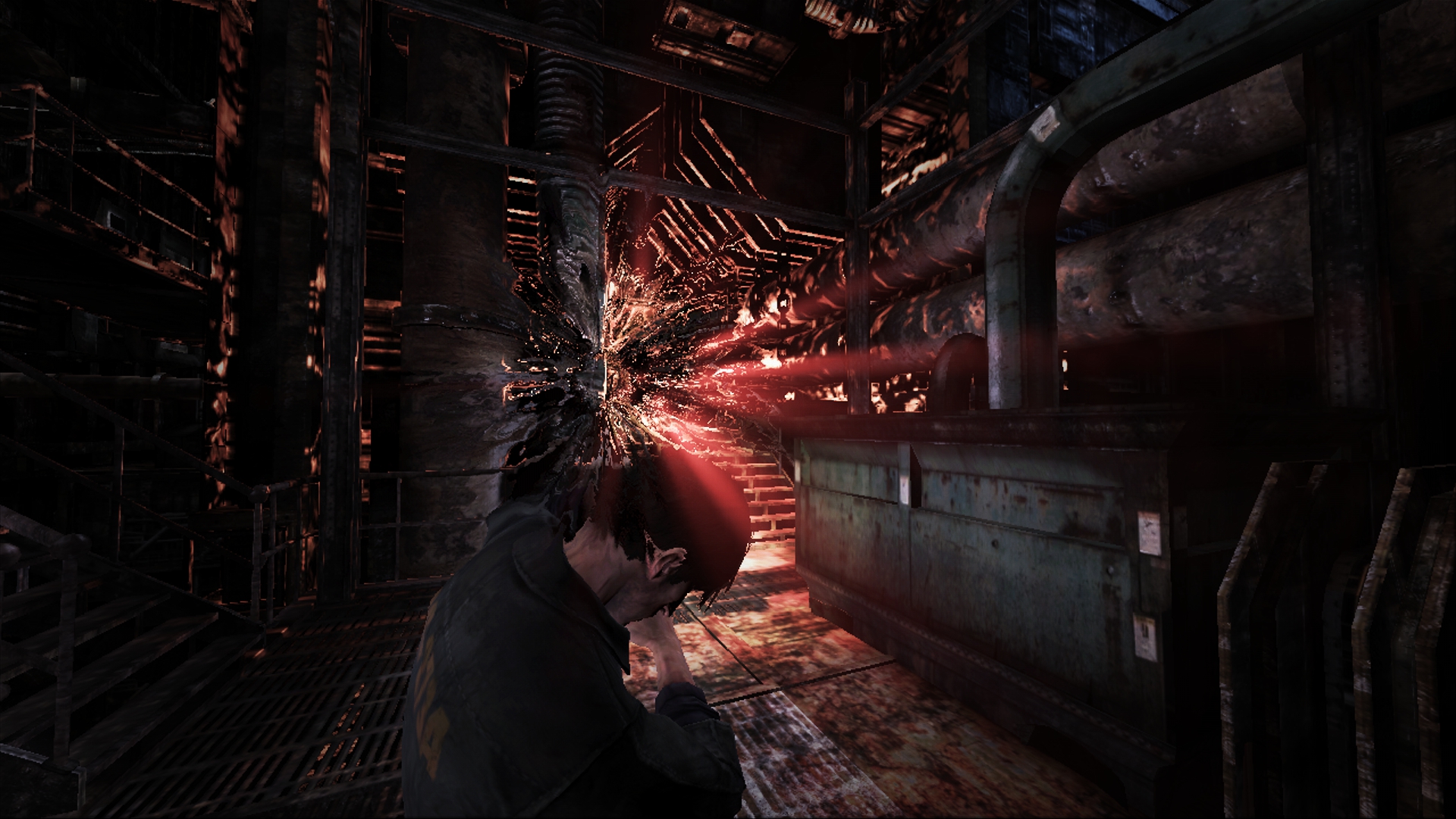
The inventory system is now accessible during gameplay. Pressing up on the d-pad to access it. Here you can use health, or choose an item. Don’t try and heal yourself in combat this way though, you’ll continue to be in the game, so using the menu to heal will leave you open to an attack. Instead, Vatra added a nifty heal button: hitting right on the d-pad instantly heals Murphy with what ever health items he has.
Downpour takes some heavy gameplay cues from Shattered Memories. Murphy can look over his shoulder, open doors slowly, and toss things in his way while on the run. The ability to zoom in on objects by pressing down the right analog is something that I used a lot. I like looking at signs, objects, and other small details in the environment. This mechanic remains slightly uncomfortable for me. I had asked Tomm is this could be switched to a toggle rather than hold setting, but focus testing suggested this was the better alternative. Personally, I would prefer to click it once, and enjoy looking around, rather than killing my right thumb because of holding it down for extended period of time.
After looking around the strange building for quite some time, I found an electrical wire. Soon enough, I found an elevator. Using the wire to finish the circuit—this was a fetch-and-use task, not a puzzle like the one in Homecoming—the elevator sprang to life. Murphy ascended up into a yard. Every health pack is precious, so I was sure to pick up each and every one up. I did find it a little odd that there were medical cabinets all around the town housing these medkits, even in old looking areas.
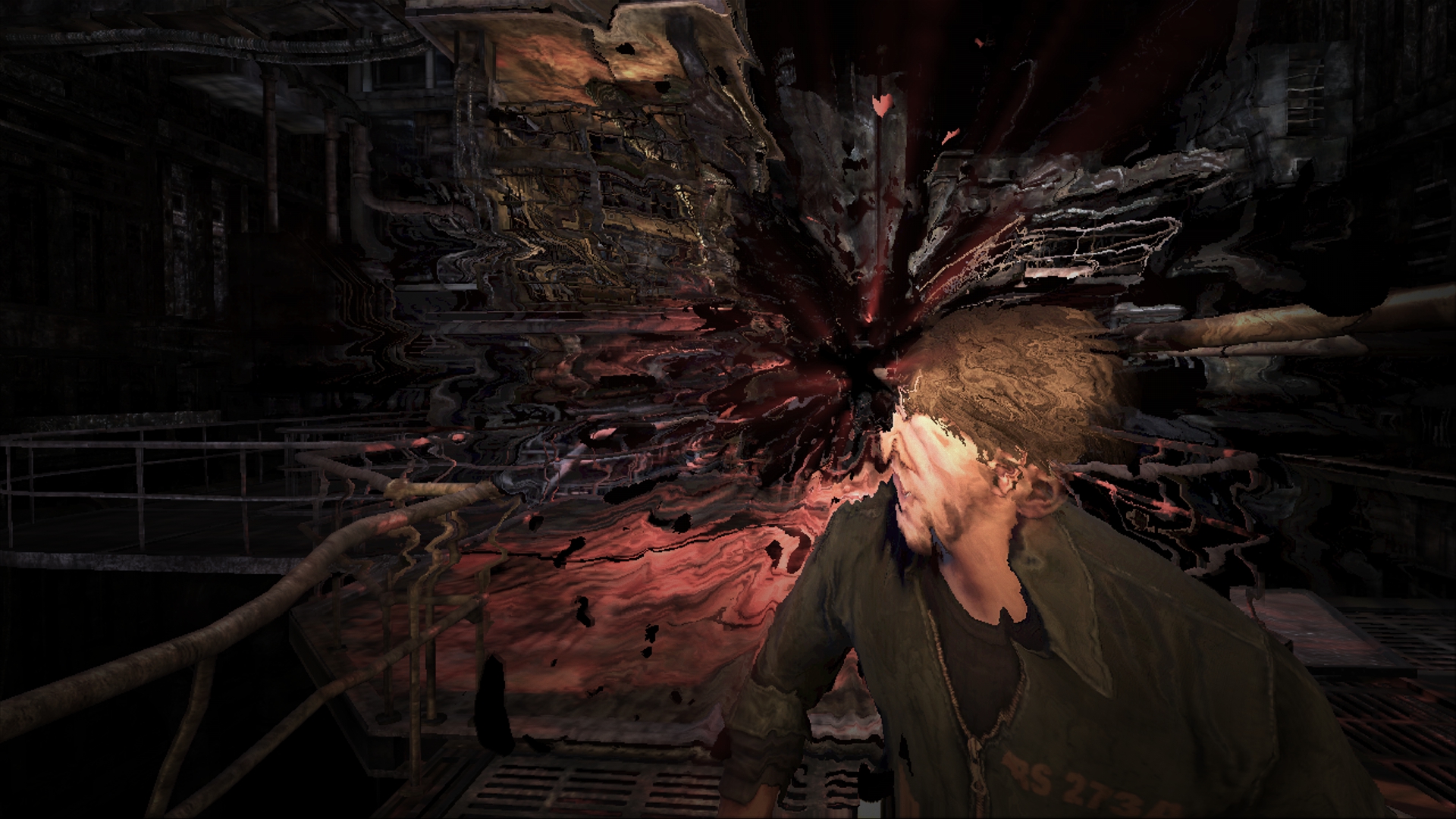
Inside of these structures was an arcade machine. Of course it wouldn’t be plugged in, so I went off to find the power source. After switching it on, we were shown one of the game’s first puzzles. Using the coin found in the the tram station, I activated the machine. I wouldn’t go ahead and call it a puzzle perse, but more like a minigame; it was an arcade machine after all. The task at hand was to move the tiny balls into their corresponding color. Water filled the machine that guided the balls up through an obstacle filled grid. Speaking to Tomm, we asked how this particular puzzle would differ. If the game were to be on Hard, the amount of balls would increase. It wasn’t difficult. Being at the very start of the game, it’s hard to demand a notebook worth puzzle. Hopefully there will be a lot of those in the full game.
Silent Hill: Downpour is living up to what I have hoped for. In our hefty chunk of playtime, we saw some amazing things. Downpour’s graphics have been fine tuned and rank up there with other Unreal Engine games. The lighting and color palette gives the game an eerie, dark, but vibrant style that is new to the series. While I do have reservations on how the inventory system handles side-quest items; how the journal’s zoom mechanic works; and finally how intense combat scenarios might get, I think Downpour will be a winner.
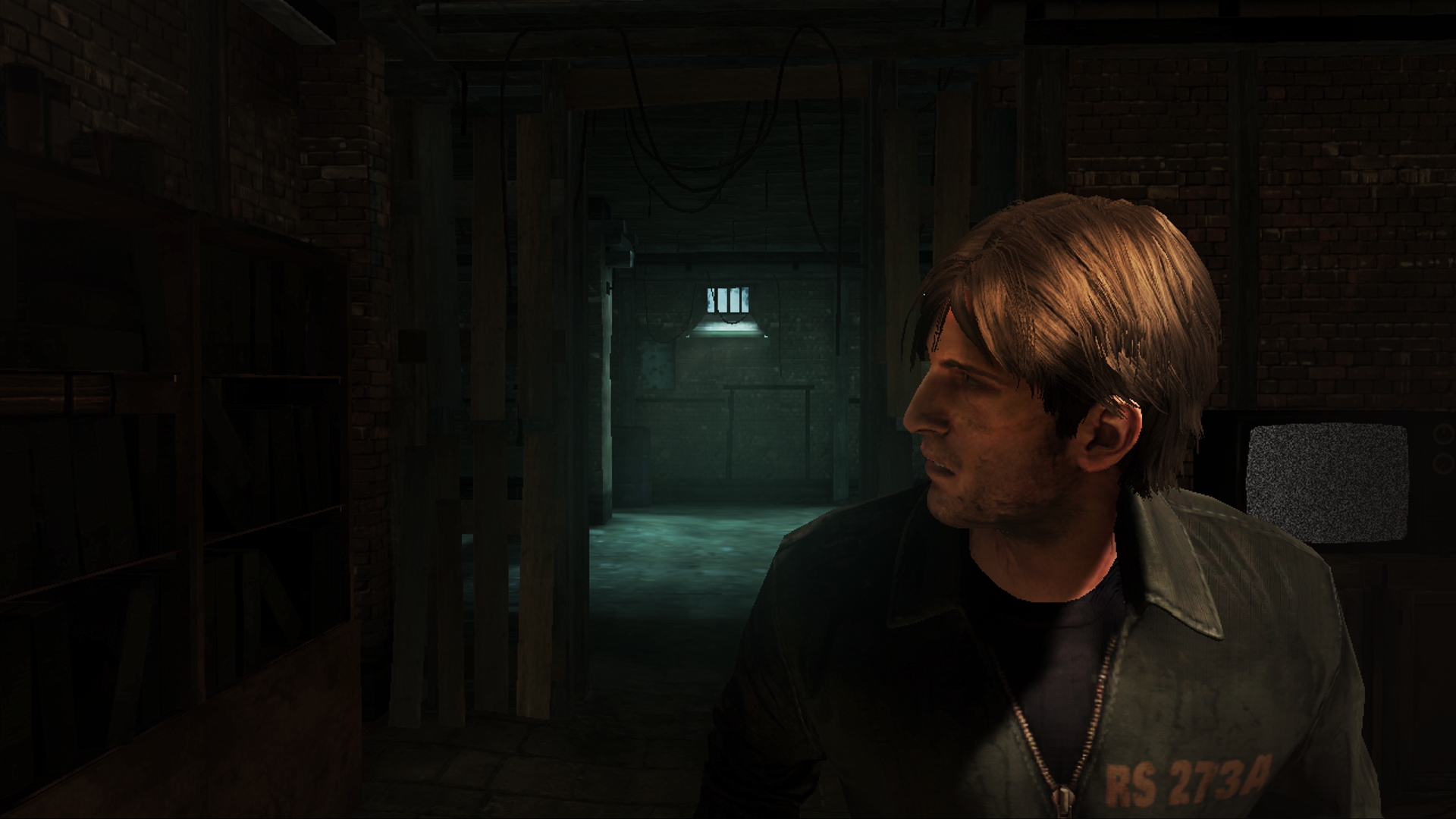
Hearing a new track, and listening to the ambient sounds really drew me into the experience. Dan Licht seems to be a worthy successor to Akira Yamaoka. I was floored by the new track we listened to. Just playing off of standard speakers, I could tell this game will sound fantastic in surround sound. The crushing of leaves, rain drops, creaking rooms, and the occasional background noise really worked for me. The absence of sound was also used in some areas—something that can be as unsettling as a scream or whispering when utilized properly. The gameplay of Downpour no longer worries me. I am more than satisfied with the combat mechanics, and Murphy’s overall movement. He has some weight to him, but it’s not constricting like “tank” controls.
All in all, I think I’m going to love Silent Hill: Downpour, but one of the most important things can not be judged yet is still missing: the story. While I do enjoy the gameplay and design so far, the most important part of a Silent Hill game is the story. That can’t be judged just yet. I hope many of you take solace in the fact that I found what I have played to be enjoyable and interesting. My time spent with the game put a smile on my face, and some chills down my spine. When the full game releases, I hope that this will continue to be the case.
For footage of our playthrough, check out the video below!

 cjmelendez_
cjmelendez_


